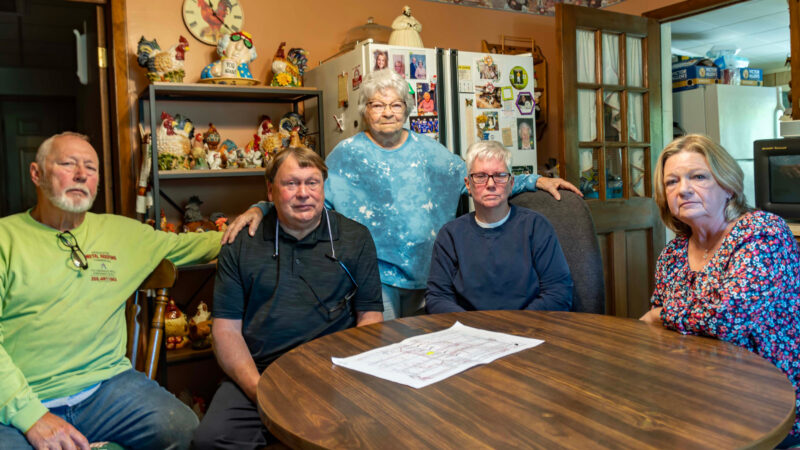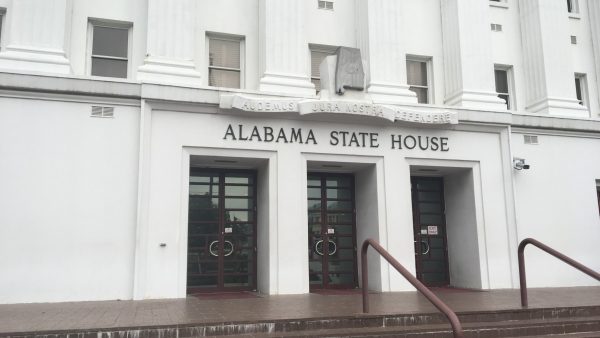SFS: By the Numbers
It’s three o’clock on a Saturday afternoon. The Walmart off Parkway East
in Roebuck is bustling with holiday shoppers. The parking lot is full. Customers filter in and out of the store joking, talking and relaxed.
But at night, it’s totally different. A security vehicle patrols the lot. The few cars there are park close to the store. As he loads bags into his car, customer Keith Turner says he knows why.
“I’m a lot more comfortable during the day than at night here. I will come out here at night, but I want to make sure I’m paying more attention because things tend to happen at night, and here I think it’s a little more ample for something to happen in this area, versus some of the other areas where the Walmarts are located.”
Perception of crime is often shaped by city rankings, and all the bad
publicity they generate. But are these “lists” reliable – or as irrelevant as Mr. Blackwell’s Best and Worst Dressed List?
Any discussion on crime statistics begins with the International Association of Chiefs of Police and the FBI. The Association developed The Uniform Crime Reporting Program in 1929 — it defined crime categories, such as homicide, murder, rape, robbery, burglary and automobile theft. A year later, the FBI began collecting, publishing, and archiving those statistics. Tom Bush is assistant director of the FBI’s Criminal Justice Information Services Division, in Clarksburg, West Virginia.
“It’s basically to assess and monitor the nature and the type of crime in the nation. But, it’s also to generate this information back to the law enforcement community, as well. So, we do use it and publish the information for us to track it, but it’s also a great benefit to actual producers of the information.”
That’s because the FBI uses the data collected from nearly 17,000 law enforcement agencies to compile the “Uniform Crime Report” and publish “Crime In The United States.” This Bible of American statistics is the official record for crime rates in the country.
Here’s the math lesson – and why it’s important. A city’s crime rate is the
number of crime victims divided by the city’s population. That equation ignore some factors that can drastically affect a city’s crime rate. For example, someone visits Birmingham from Atlanta and robs a house. The crime victim is now part of the equation. But, the fact the criminal was just “visiting the city” is ignored. So, the number of crime victims increases, but the city’s population doesn’t. This can skew the crime rate and make it “seem” worse than it is. The FBI’s Tom Bush says the crime rate also doesn’t consider “hot spots” or specific neighborhoods of a city that are more prone to crime or “hot” times of the day when crime is more likely – like late Friday night.
“You don’t get a full picture of the area just based on this data. It’s incomplete. It’s summary data, at best. You’ve got so many variables that come into play on that, all kind of demographics, events,the climate, movement of population. So, if you don’t take those things into consideration, and you look purely at these numbers, I just think it gives a very slanted outcome.”
There’s also the issue of “dark figures.” That’s the number of cases that
aren’t included in the statistic. University of Delaware criminologist Joel Best says many crimes go unreported because victims don’t trust the police or they know the person who committed the crime and are afraid of reprisal.
“I think most criminologists believe that the figures we have for murders are pretty accurate, because murders produce a dead body, they’re relatively easy to count. So, probably those numbers aren’t too far off. But, most other crime statistics have a substantial dark figure, and we can’t even guess how large the dark figure might be.”
John Sloan agrees. He’s chair of the Department of Justice Sciences at UAB and he says the Uniform Crime Reports should not be read as gospel. He says in the late sixties criminologists discovered some police departments doctored the books.
“What they were doing, they were reclassifying rapes as assaults, so there were fewer rapes than there actually were.”
Sloan says two other reports paint a far more accurate picture. First, there’s Self-reports, where authorities ask criminals and juvenile delinquents if they committed certain crimes. Then there’s the National Crime Victimization Survey or NCVS. Each year, it takes a national sample of households and asks if residents have been victimized. If so, did they contact the police? If not, why not.
“In my opinion, the best source that is current, is the NCVS because regardless of whether you reported the offense to the police, or not, you still show up in the NCVS. ”
But, he cautions:
“There is no best measure. There are different measures, which answer different questions that relate to the bottom line question of how much crime is there.”
“Black figures.” Inconsistent reporting. It’s no wonder criminologists rail against those who use these figures to rate the safety of cities. Joel Best at the University of Delaware believes people tend to concentrate on anecdotal evidence, like sensationalized news reports of particular crimes, and ignore the facts, no matter how they’re presented.
“One of the most interesting trends in criminology is during the 1990’s, the crime rate has dropped a great deal, and has remained relatively low. We have a relatively low crime rate, right now. And, yet, I think that most people assume that crime is actually at record highs.”
He’s right. An unscientific sample of people in Homewood confirms it.
Man #1 “It’s going up, there’s a murder every day”
Male #2 “Crime is going up because the Birmingham police aren’t doing their
job.”
Again, criminologist Joel Best.
“So, they’re really not paying attention to the crime statistics.”
It’s natural to assume that numbers tell the truth. But, it was Mark Twain
who said, “Facts are stubborn, but statistics are more pliable.” Words worth remembering the next time an annual ranking of the “the most dangerous” hits the media.
Alabama coal mine keeps digging after hundreds of fines and a fatal explosion
Following the death of a grandfather, Crimson Oak Grove Resources has left a community afraid for their homes and lives. An expert warns one resident may need to evacuate her home while she still can.
Florida’s 6-week abortion ban will have a ‘snowball effect’ on residents across the South
Abortion rights advocates say the ban will likely force many to travel farther for abortion care and endure pregnancy and childbirth against their will.
Attitudes among Alabama lawmakers softening on Medicaid expansion
Alabama is one of ten states which has not expanded Medicaid. Republican leaders have pushed back against the idea for years.
Birmingham is 3rd worst in the Southeast for ozone pollution, new report says
The American Lung Association's "State of the Air" report shows some metro areas in the Gulf States continue to have poor air quality.
Why haven’t Kansas and Alabama — among other holdouts — expanded access to Medicaid?
Only 10 states have not joined the federal program that expands Medicaid to people who are still in the "coverage gap" for health care
Once praised, settlement to help sickened BP oil spill workers leaves most with nearly nothing
Thousands of ordinary people who helped clean up after the 2010 BP oil spill in the Gulf of Mexico say they got sick. A court settlement was supposed to help compensate them, but it hasn’t turned out as expected.







